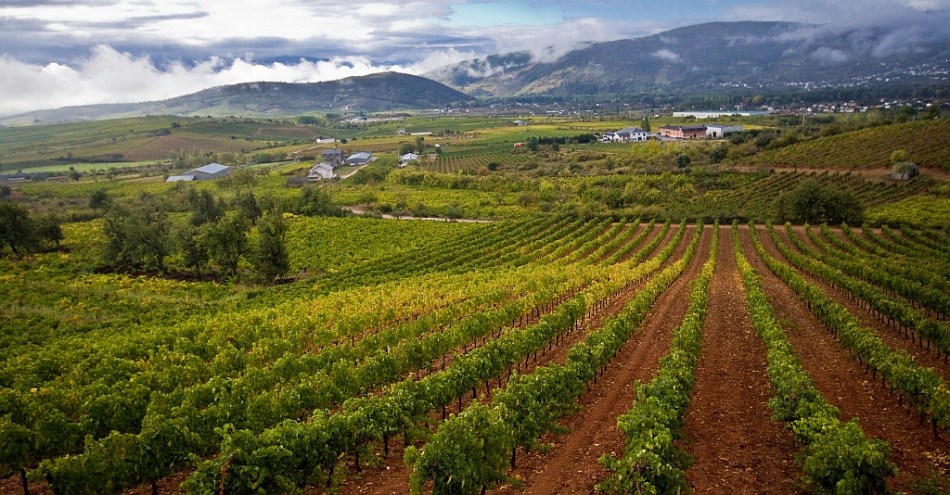
El Bierzo, located in the North-West of Spain, is a mountainous region crossed by the Road to Santiago (Way of Saint James) which the pilgrims used to call the “Spanish Switzerland”. This extreme mountain feature is what makes it, together with its climate and soil, one of the ideal regions worldwide to grow vineyards.
The Mencía grape is the main variety of El Bierzo. This variety, scorned until very recently, has managed in the last few years to seduce the best enologists and wine producers in Spain, who have slowly gone looking for it in their territory, even highlighting it as one of the Spanish varietal jewels. They have understood it contains enormous potential and the challenge of bringing out all the possibilities it conceals to make great wines with character. Wines full of subtleties, with a good aging capability, and deep expressiveness of the history-laden terroir they grow in.
The origin of Mencía is lost in time, but there are many signs indicating it could be one of the first grape stocks introduced in the Iberian Peninsula. Already in ancient times, the areas where Mencía now rules were famous for the coming and going of Roman legions which planted the first vines and built presses, and since then these areas have had a deep wine-producing tradition. Supposedly through the Roman Road, the wine produced in these lands was transported to Imperial Rome, to be enjoyed by the emperors. References to the vines of the region of El Bierzo and Valdeorras already appeared two thousand years ago cited by the Roman Pliny. With the fall of the Empire, the vines also declined.
Their rebirth and greater expansion came with the growth of medieval monasteries, for which wine was not only an element of worship, but also an essential food product. Monks introduced new growing and production techniques. In addition to the splendour of the monasteries was the brilliance of the Road to Santiago, which encouraged the spread of vines, bestowing wine with a special significance. The first pilgrims to Santiago already spoke of the excellence of the wines produced along the way. On the road, wine became a precious asset, an element of barter, to pay taxes and also to pay the saints of the area for their miracles.
At the end of the 19th century, however, the phylloxera changed the picture, destroying many of the vines and leading to a major economic crisis that forced many to emigrate. Aside from people, it meant also the loss of many native Spanish varieties, which were not recovered until very recently.
Vine growing was re-established in the first half of the 20th century, but the consequences of the Spanish Civil War between 1936 -1939 plunged many wine producers into absolute poverty, which forced them to emigrate, leading once again to the neglect of many vineyards.
Mencía generates wines of a deep raspberry colour, intense fruit aromas, but also delicate flower ones, good alcohol doses, proper acidity and aging possibility. Until recently, reds made of Mencía were rather light wines, ready to drink, with low alcohol content. Gradually they have changed, especially in El Bierzo, into wines that seek to bring out their full potential, the expressiveness of their soil, and the good aging capacity Mencía is showing, adding ever-longer aging periods in wood. This has resulted in the rebirth of this stock, which recent studies liken greatly to Cabernet Franc, which is why some link its origin to Bordeaux and the pilgrims coming from France for centuries following the Road to Santiago.
A very sensitive grape, the Mencía crop stands out predominantly in mountain regions, which is why its ripening has much to do with the sun orientation and altitude of the vineyards. El Bierzo is the Spanish designation with the most French characteristics. Its geography features major geographical contrasts, deep river basins, mountainous ranges and marked differences between its high and low lands, all of which is reflected in its wines. Mineral slate soils, but also clay-muddy ones, stand out in the territory of Mencía. The substratum marks the wine’s minerality, and also underscores the various fruit expressions and concentrations.